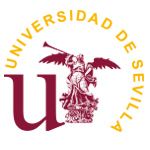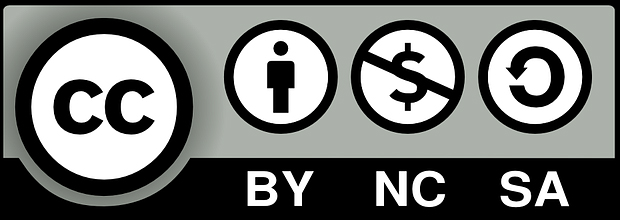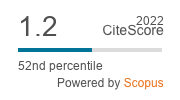Didactic transposition of grammar and initial teacher training
DOI:
https://doi.org/10.12795/revistafuentes.2022.21094Keywords:
Initial training, Modelling, Text Didactics, Grammar teaching, Primary Education Degree, Case study, Teaching practice, Communicative approachAbstract
This research corresponds to a single case design (Yin, 1984) with students of the degree in Primary Education. The justification for the study was focused on analyzing the sustainability of a model for teaching grammar in language learning (Romero et al., 2020), developed in the Didactics of Grammatical Competence subject, during the internship period curricular. The 38 students were intentionally selected because they should have implemented the methodology learned in the subject and reflect with their university supervisors on those achievements and difficulties encountered during implementation in schools. The voice of the participating students was collected through their biographical narratives and the development of focus groups, where the results were shared. The main findings reveal that, despite the high level of evaluation of the methodological proposal based on the didactics of the text, they still consider it difficult to implement it due to the current pedagogical culture, very focused on purely grammatical aspects, and on the decontextualization of the contents curricula in the area of Spanish language and literature. The study is completed with a series of proposals for the initial training of teachers from an integrating vision of the university with the school to face the challenge of locating the teaching of grammar in the improvement of the linguistic behavior of girls and boys in their school stages mandatory.
Downloads
References
Acevedo, J. A. (2009). Conocimiento didáctico del contenido para la enseñanza de la naturaleza de la ciencia (I): el marco teórico. Revista Eureka sobre Enseñanza y Divulgación de las Ciencias, 6(1), 21-46. https://bit.ly/3xo9CdF
Álvarez Angulo, T. (2005). Didáctica del texto en la formación del profesorado. Síntesis.
Barquín, J. (2013). Cooperación y formación a través del practicum. Experiencias en la Universidad de Málaga (España). Hachetetepé. Revista científica de Educación y Comunicación, (7), 13-23. https://doi.org/10.25267/Hachetetepe.2013.v2.i7.3
Bastons, N., Comajoan, L., Guasch, O. & Ribas, T. (2017). Les creences del profesorat sobre l’ensenyament de la gramática a primària, secundària i en l’ensenyament d’adults. Caplletra, (63), 139-164. https://doi.org/10.7203/Caplletra.63.10397
Boíllos, M.M. (2017). Escribir a través de los géneros discursivos en el marco educativo basado en las competencias: el caso del País Vasco. Tejuelo, (26), 63-90. https://doi.org/10.17398/1988-8430.26.63
Bosque, I. (2018). Qué debemos cambiar en la enseñanza de la gramática. ReGrOC. Revista de Gramática Orientada a las Competencias, 1(1), 11-36. https://doi.org/10.5565/rev/regroc.12
Camps, A. (2003). Secuencias didácticas para aprender a escribir. Graó.
Camps, A. (2014). Hacia una renovación de la enseñanza de la gramática. Lenguaje y Textos, (40), 7-18. https://bit.ly/3mCO08j
Charolles, M., & Combettes, B. (2001). De la phrase au discours: ruptura et continuité. En C. García-Debanc, J.P. Confais, & M. Grandaty (Coords.). Quelles grammaires à l’école et au collège? (pp.117-141). Delagrave/CDR Midi-Pyrénées.
Chevallard, Y. (1998). La transposición didáctica. Del saber sabio al saber enseñado. Aiqué.
Colón, M.J., y Valén , A. (2021). La enseñanza de la gramática en Educación Primaria: Un estudio etnográfico sobre el pensamiento y la acción docente. Didacticae (10), 126-143. https://doi.org/10.1344/did.2021.10.126--143
Develay, M. (1995). Le sens d’une épistémologie scolaire. En M. Develay, M., Savoirs scolaires et didactiques des disciplines, une encyclopédie pour aujourd’hui. (pp. 17-31). ESF.
Dolz, J., Rosat, M.C., & Schneuwly, B. (1991). Élaboration et évaluation de deux séquences didactiques relatives à trois types de textes. Le Français aujourd’hui, (93), 37-47.
España. Orden ECI/3857/2007, de 27 de diciembre, por la que se establecen los requisitos para la verificación de los títulos universitarios oficiales que habiliten para el ejercicio de la profesión de Maestro en Educación Primaria.
Ferrer, M. (2015). La función del libro de texto en la clase de lengua. Textos de Didáctica de la Lengua y la Literatura, (69), 51-59.
Fontich, X. (2011). Enseñar y aprender gramática en la escuela obligatoria, hoy. Revista Espaço Pedagógico, 18(1), 50-57. https://doi.org/10.5335/rep.2013-2065
Fontich, X. (2013). La gramática de la primera lengua en la escuela: Reflexiones sobre su enseñanza-aprendizaje y sobre el contenido gramatical escolar. Bellaterra Journal of Teaching & Learning Language & Literature, 6(3), 1-19. https://doi.org/10.5565/rev/jtl3.531
Fontich, X. (2021). Consideraciones sobre la enseñanza y el aprendizaje de la gramática de la primera lengua en la escuela. RILCE. Revista de Filología Hispánica, 37(2), 567-589. http://doi.org/10.15581/008.37.2.567-89
García Folgado, M.J., Fontich, X., y Rodríguez Gonzalo, C. (2022). ¿Y si la gramática fuera útil? Aportaciones a la investigación sobre la enseñanza de la gramática y las prácticas reflexivas. Tejuelo, 35(3). https://doi.org/10.17398/1988-8430
García-Lázaro, I., Conde-Jiménez J., y Colás-Bravo, Mª P. (2020). El desarrollo profesional a través de las prácticas externas desde la visión del profesorado en formación inicial. Revista Fuentes, 24(2), 149-161. https://doi.org/10.12795/revistafuentes.2022.19665
Gudmunsdsdottir, S. (1991). Ways of seeing are always of knowing. The pedagogical content knowledge of an expert English teacher. Journal of Curriculum Studies, 23(5), 409-421. https://doi.org/10.1080/0022027910230503
Gutiérrez, A., y Gaviño, V. (2020). La huella de la Real Academia Española en los manuales de enseñanza de la lengua en Secundaria. Educação & Formação, 5(3). https://doi.org/10.25053/redufor.v5i15set/dez.2891
Gutiérrez, A., y Romero, M.F. (2022). Libros de texto y planificación docente ante la enseñanza de la gramática en Educación Secundaria. Didacticae. Revista de Investigación en Didácticas Específicas, (11), 153-171. https://doi.org/10.1344/did.2022.11.153-171
Hyland, K. (2007). Genre Pedagogy: Language, Literacy and L2 Writing Instruction. Journal of Second Language Writing, 16(3), 148-164.
Imbernón, F. (2007). La formación y el desarrollo profesional del profesorado. Hacia una nueva cultura profesional. Graó
Jiménez, R. (2011). La gramática en los manuales de la ESO: Actividades sobre morfosintaxis. Cauce: Revista Internacional de Filología, Comunicación y sus Didácticas, (34–35), 231–255. https://bit.ly/3QdUQ1H
Jiménez, R., Romero, M. F., y Heredia, H. (2019). Formación inicial del maestro y competencia gramatical para su práctica docente. Revista de Humanidades, (37), 151-178. https://doi.org/10.5944/rdh.37.2019.22350
Lomas, C. (1999). Cómo enseñar a hacer cosas con las palabras: teoría y práctica de la educación lingüística. Paidós.
Lomas, C. (2014). La educación lingüística, entre el deseo y la realidad. Octaedro.
Martín Peris, E. (1998). El profesor de lenguas: papel y funciones. En A. Mendoza (coord.). Conceptos clave en didáctica de la lengua y la literatura. (pp.87-100).Universitat de Barcelona.
Mcmillan, H.; Schumacher, S. (2005). Investigación educativa: una introducción conceptual. Pearson educación.
Milian, M. (2010). La gramática en los manuales de lengua: ¿qué actividades se proponen a los alumnos? En T. Ribas (Coord.), Libros de texto y enseñanza de la gramática (1ª ed.). (pp.155-172). Graó.
Redón, S. (2017). El grupo de discusión y el grupo focal. En S. Redon y J. F. Angulo (coords.), Investigación cualitativa en educación (pp.117-132). Miño y Dávila.
Rodríguez Gómez, G., Gil, J., y García Jiménez, E. (1996). Metodología de la investigación cualitativa. Ediciones Aljibe
Rodríguez Gonzalo, C. (2011). La reflexión sobre la lengua y la enseñanza de la gramática. Textos de didáctica de la lengua y la literatura, (58), 60-73.
Rodríguez Gonzalo, C. y Zayas, F. (2017). La relación entre conocimientos gramaticales y el aprendizaje de prácticas discursivas: el adjetivo como ejemplo. Caplletra. Revista Internacional de Filología, (63), 245-277. https://doi.org/10.7203/caplletra.63.10401
Romero, M.F. (2008). Consideraciones didácticas para el dominio y la complejidad sintácticas. Tonos Digital, (16), 1-20. https://bit.ly/3zyjHHM
Romero, M.F., Jiménez, R., y Trigo, E. (2020). Donde habita el olvido: recuperando el lugar de la gramática en las aulas. Lublin Studies in Modern Languages and Literature, 44(3), 117-129. http://doi.org/10.17951/lsmll.2020.44.3.117-129
Romero, M.F., y Jiménez, R. (2016). La lectura intensiva como estrategia para el desarrollo de las habilidades comunicativas en estudiantes de secundaria de ELE. En E. Stala, S. Balches, y C. Tatoj, (eds.). Tendencias en la enseñanza de español LE. Perspectivas glotodidácticas y metodológicas contemporáneas, (pp. 35-73)Wydawnictwo Uniwersytetu Jagiellońskiego.
Romero, M.F.(2022) Identidades docentes y formación inicial de profesorado en Didáctica de la Lengua y la Literatura. Peter Lang.
Ruiz Bikandi, U. & Camps, A. (2009). Investigar los géneros discursivos en el proceso educativo. Revista de Psicodidáctica, 14(2), 211-228. https://doi.org/10.1387/RevPsicodidact.725
Santolària, A. (2019). La secuencia didáctica: un instrumento para escribir textos en Educación Infantil. Didáctica. Lengua y literatura, 31, 285-301. https://doi.org/10.5209/dida.65953
Yin, R.K (1984). Case Study Research: Design and Methods. Sage Publications.
Zayas, F. (1996). Reflexión gramatical y composición escrita. Culture and Education, 8(2), 59-66. https://doi.org/10.1174/113564096763277724
Zayas, F. (2012). Los géneros discursivos y la enseñanza de la composición escrita. Revista Iberoamericana de Educación, 59, 63-85. https://doi.org/10.35362/rie590457
Zeichner, K. M. (2010). Nuevas epistemologías en formación del profesorado. Repensando las conexiones entre las asignaturas del campus y las experiencias de prácticas en la formación del profesorado en la universidad. Revista Interuniversitaria de Formación del Profesorado, 68, 123-149.
Published
How to Cite
Issue
Section
License
Copyright (c) 2022 Antonio Gutiérrez Rivero, Manuel Francico Romero Oliva, Hugo Heredia Ponce

This work is licensed under a Creative Commons Attribution-NonCommercial-ShareAlike 4.0 International License.
Authors who publish in this journal accept the following conditions:
Authors conserve the copyrights and cede to the journal the right for first publication, with the work registered with the attribution licence of Creative Commons, which allows third parties to use the published work as long as they mention the authorship and the first publication in this journal.
The authors may make other independent and additional contractual agreements for the non-exclusive distribution of the version of the article published in this journal (e.g. include it an institutional repository or publish it in a book) as long as it clearly indicates that the work was first published in this journal.
Authors are allowed and indeed recommended to publish their work on the internet (for example on institutional or personal pages) before and during the revision and publication process, because it can lead to productive exchanges and greater and faster dissemination of the published work (see The Effect of Open Access).
Accepted 2022-08-26
Published 2022-09-30
- Abstract 955
- PDF (Español (España)) 541
- HTML (Español (España)) 228
- EPUB (Español (España)) 38














